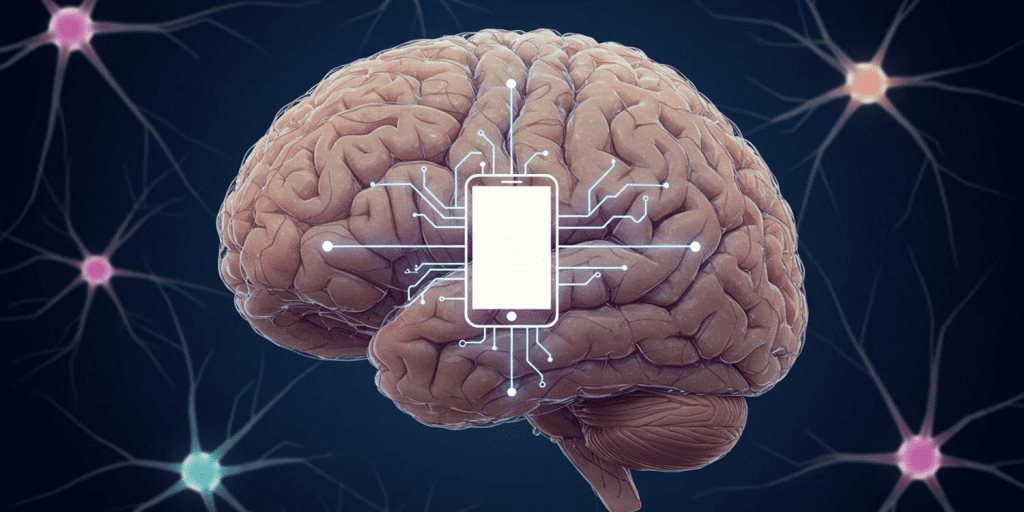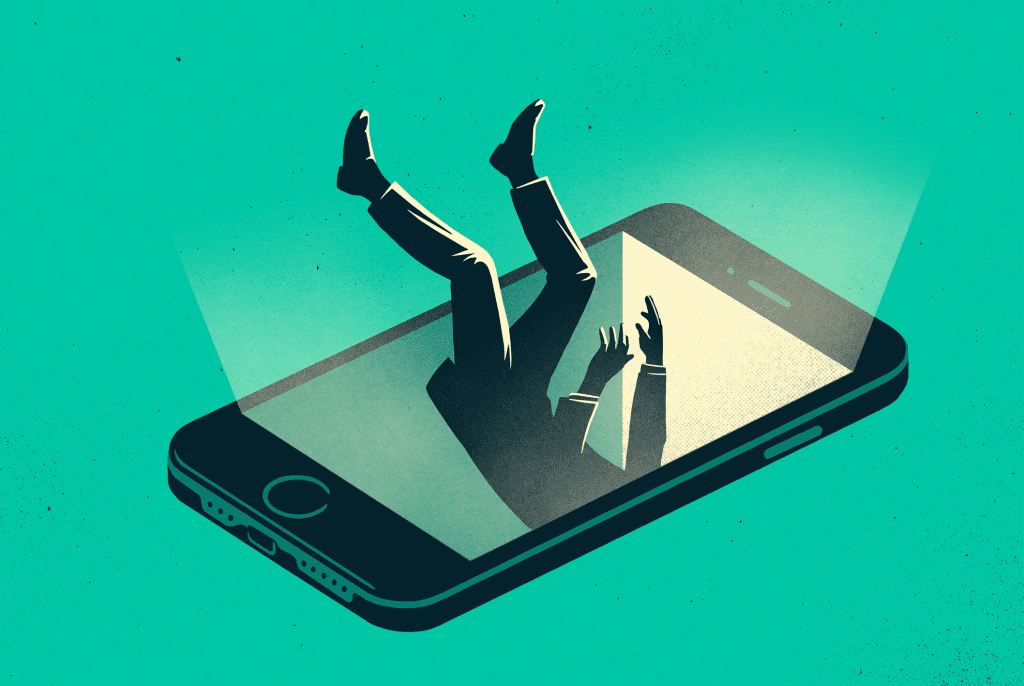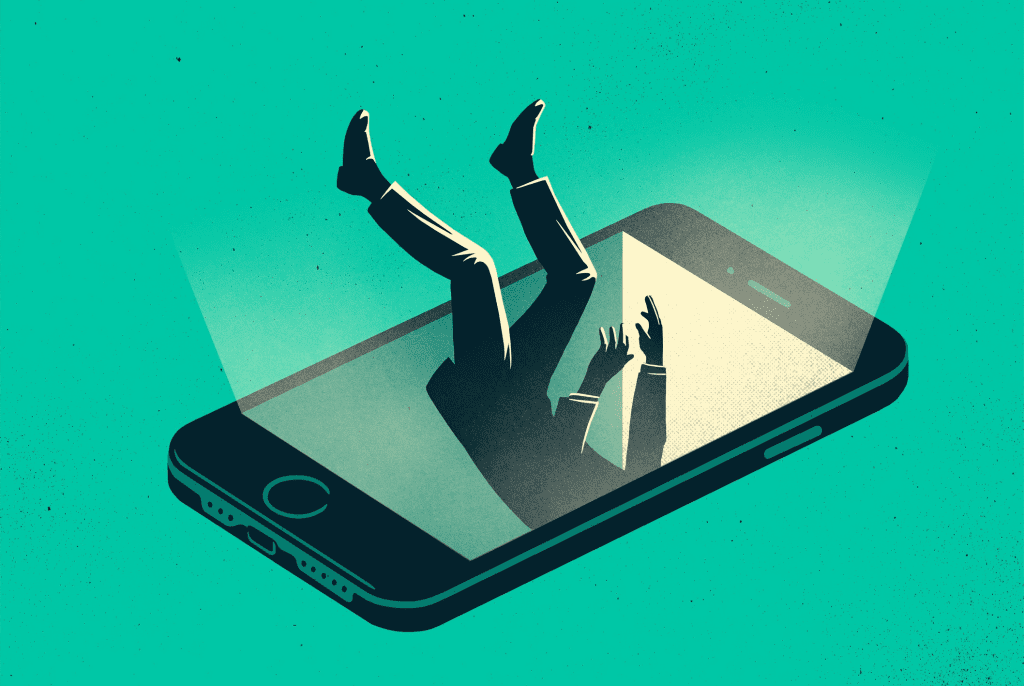Smartphones have become an inseparable part of modern life, revolutionizing communication, work, and entertainment. However, excessive smartphone use (ESU) has been linked to various negative consequences, including addiction-like behaviors, impaired mental health, and diminished attention spans. Recent studies suggest that smartphone-related cues can trigger neural responses similar to those seen in substance addiction, reinforcing compulsive usage patterns. Understanding the effects of smartphone restriction on cue-related neural activity can provide valuable insights into developing interventions for individuals struggling with ESU.
The Role of Cue Reactivity in Smartphone Use

Cue reactivity (CR) refers to the brain’s response to stimuli associated with a habitual or addictive behavior. In the case of smartphone use, cues may include notification sounds, phone screens lighting up, or simply seeing a smartphone in one’s environment. These cues can activate reward-related brain regions, reinforcing the compulsive urge to check the device.
Research has shown that individuals with excessive smartphone use exhibit heightened neural responses to smartphone-related cues, similar to those observed in substance addiction. This heightened sensitivity may contribute to difficulty in controlling smartphone usage, leading to a cycle of compulsive checking and craving.
Investigating Neural Activity Changes Through Smartphone Restriction
To better understand how short-term smartphone restriction influences brain activity, researchers conducted a study using functional MRI (fMRI) to measure changes in cue-related neural responses over 72 hours of smartphone abstinence. The study involved 25 young adults who were regular smartphone users.
Video : What Happens To Your Brain When You Mindlessly Scroll?
Study Design and Methods
- Participants were instructed to refrain from using their smartphones for 72 hours.
- A cue-reactivity task was designed, where participants were exposed to images of smartphones (both active and inactive) as well as neutral objects.
- Functional MRI scans were conducted before and after the restriction period to analyze changes in brain activity.
- Psychometric assessments were used to measure craving, self-control, and emotional responses associated with smartphone use.
Key Findings: How the Brain Adapts to Smartphone Restriction
1. Reduced Activation in the Reward System
One of the most striking findings was a significant reduction in activity in the nucleus accumbens and anterior cingulate cortex after 72 hours of smartphone restriction. These brain regions are heavily involved in reward processing and habit formation.
- The nucleus accumbens is associated with motivation and reinforcement learning. High activation in this area suggests strong craving and compulsive behavior.
- The anterior cingulate cortex plays a role in decision-making and impulse control. Reduced activity here indicates that participants may have experienced less compulsion to check their smartphones.
These findings suggest that even a short break from smartphone use can lead to neuroplasticity, allowing the brain to become less reactive to smartphone-related cues.
2. Alterations in Dopamine and Serotonin-Linked Activity
Further analysis using neurotransmitter probability maps revealed that activity changes in the reward system were closely linked to dopamine and serotonin receptor probabilities.
- Dopamine is a key neurotransmitter in reward-seeking behavior and addiction.
- Serotonin is involved in mood regulation and impulse control.
The findings suggest that smartphone restriction may influence neurochemical processes that drive compulsive behaviors. This could explain why some people feel withdrawal-like symptoms, including restlessness and anxiety, when they suddenly stop using their phones.

3. Increased Engagement of the Parietal Cortex
Another notable result was the increased activity in the parietal cortex, a region associated with attentional control and sensory processing.
- This suggests that participants became more aware of their environment and less preoccupied with smartphone-related distractions.
- Heightened parietal cortex activity was correlated with reduced craving scores, indicating improved cognitive control over impulsive smartphone use.
This supports the idea that limiting smartphone use can enhance focus and attentional regulation, reducing dependency on digital devices.
4. Reduced Compulsive Checking Behavior
Behavioral assessments showed that participants experienced a significant decrease in the urge to check their smartphones over time. This aligns with the observed neural changes in reward sensitivity and impulse control.
Participants also reported improvements in:
- Sleep quality: Reduced exposure to blue light and nighttime scrolling led to better sleep patterns.
- Social interactions: Without constant phone distractions, participants engaged more with people around them.
- Mental well-being: Several individuals noted feeling less anxious and more present in their daily activities.
Implications for Smartphone Addiction and Digital Detox Strategies

The findings of this study have significant implications for individuals struggling with excessive smartphone use. While a complete break from smartphones may not be feasible for everyone, implementing digital detox strategies can help manage usage and mitigate negative effects.
1. Scheduled Smartphone Breaks
- Taking regular breaks from smartphone use, even for a few hours a day, can help reset neural responses to digital cues.
- Setting specific times for checking messages rather than responding to every notification can reduce compulsive checking.
2. Mindful Technology Use
- Practicing conscious smartphone use by turning off unnecessary notifications and using grayscale mode can help decrease reliance on digital stimuli.
- Engaging in non-digital hobbies, such as reading, exercise, or meditation, can strengthen attention control and reduce smartphone dependency.
3. Sleep Hygiene and Nighttime Restrictions
- Avoiding smartphone use one hour before bed can improve sleep quality by preventing blue light exposure.
- Using do not disturb or airplane mode at night can minimize the temptation to check notifications.
4. Awareness Campaigns and Education
- Schools, workplaces, and mental health professionals can promote awareness of the impact of excessive smartphone use on brain function.
- Implementing digital wellness programs can encourage balanced technology use.
Video : Cell Phones Affect Brain Activity

Conclusion: How Smartphone Restriction Reshapes the Brain
The study provides compelling evidence that even a short period of smartphone restriction can lead to measurable changes in brain activity. The observed reductions in reward-related neural responses, coupled with increased attentional control, suggest that limiting smartphone use can promote cognitive flexibility, impulse control, and overall mental well-being.
As smartphone addiction continues to be a growing concern, understanding the neurological basis of cue-reactivity and digital dependency is crucial. These findings highlight the importance of incorporating healthy technology habits to ensure that smartphones remain tools for convenience rather than sources of compulsive behavior.
By making small adjustments in smartphone usage, individuals can foster better focus, improved mental clarity, and greater overall life satisfaction. So, why not start with a 72-hour break and see how your brain adapts?
My husband wanted a divorce because I couldn’t give him a son. What happened next changed our lives forever.

Marriage had always been a partnership of love and support, or at least that’s what I believed when Steve and I first tied the knot 16 years ago. Over time, we were blessed with five beautiful daughters, each one a joy and a challenge in her own way. Yet, in Steve’s eyes, our family lacked something crucial: a son.
Steve’s desire for a male heir became an obsession, overshadowing every happy moment we had. His traditional mindset dictated that a man’s legacy could only be carried on by a son, and our daughters, no matter how wonderful, were seen as inadequate. This belief had eaten away at the fabric of our marriage, turning our once joyous union into a battleground of unmet expectations and silent resentment.
Steve’s job kept him away most of the time, leaving me to juggle the responsibilities of raising our daughters, maintaining the household, and managing a part-time online job. His absence wasn’t just physical; it was emotional too. He was a shadow in our home, present yet distant, and his discontent seeped into every corner of our lives.
The Breaking Point
One late night, a seemingly innocent conversation spiraled into a full-blown argument. I had suggested trying one more time for a son, even though I was already forty. Steve’s response was brutal and laced with years of pent-up frustration.

“Shut up already,” he snapped. “We’ve been together for 16 years and you couldn’t bring me a son. What makes you think you will do it this time?”
I tried to reason with him, “But Steve, only God…”
“ONLY GOD DECIDED TO PUNISH ME WITH YOU AND ANOTHER 5 FEMALES,” he yelled, his face contorted with anger. “I wish I could go back in time and change everything.”
The venom in his words was palpable, and it stung more than any physical blow could. Our daughters, our life together, everything we had built was being torn down in this moment of raw emotion. Suddenly, we heard a noise behind the door. When we checked, there was no one there, and we dismissed it as the creaking of an old house. Little did we know, that sound was a harbinger of the events that would soon unfold.
The Missing Child
The next day, our lives took an unexpected turn. It was 6 pm, and Lisa, our 12-year-old, was always home by this time. Panic set in when she didn’t show up. As worry gnawed at us, Sara, our second-born, came running with tears streaming down her face, clutching a letter.
Steve snatched the letter from her hand and began reading. His face went ashen, his eyes widened with fear. He turned to me, his voice trembling, “This is serious.”
The letter was a ransom note. It claimed that Lisa had been kidnapped and demanded an exorbitant amount of money for her safe return. The instructions were clear: no police, no tricks, or we’d never see her again.
The Race Against Time
Our world was shattered. The next hours were a blur of frantic phone calls, desperate plans, and heart-wrenching decisions. Steve, usually stoic and composed, was a mess. His obsession with having a son seemed insignificant now compared to the possibility of losing his daughter.
The experience taught us that the value of family isn’t determined by gender but by the love, respect, and support we give each other. Steve learned to cherish his daughters and our marriage, realizing that true happiness comes from within and is nurtured by the bonds we share.
Our lives were forever changed by that harrowing experience, but it also brought us closer, forging a stronger, more resilient family. The past year had been incredibly tough, but it led to a new beginning, one where we could all be truly happy together.



Leave a Reply